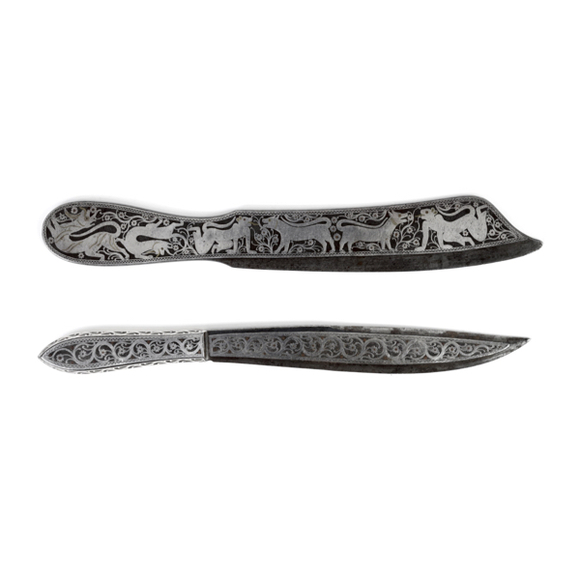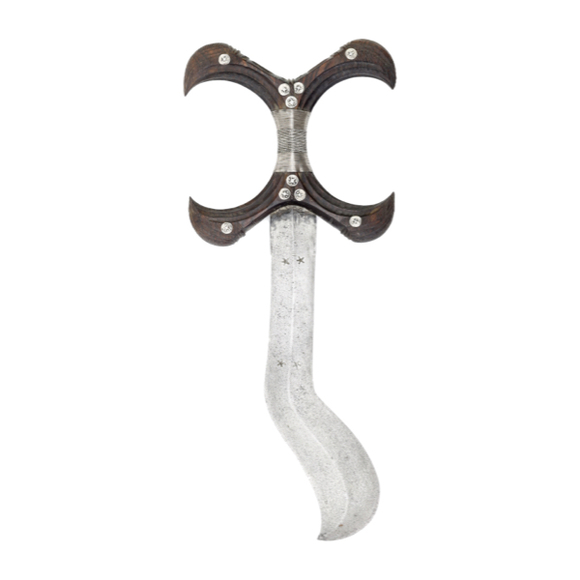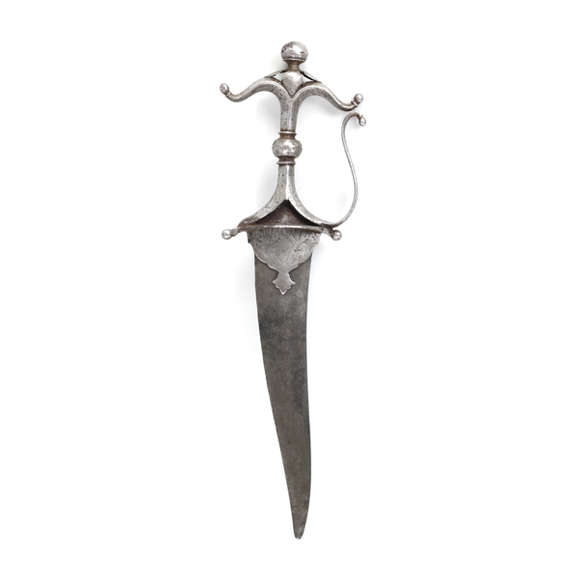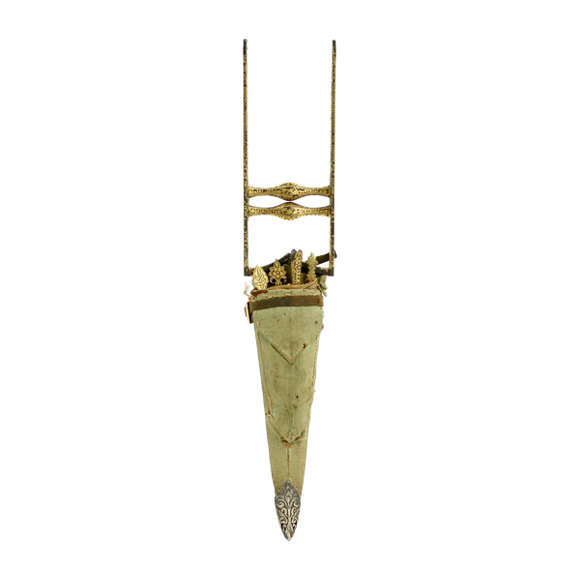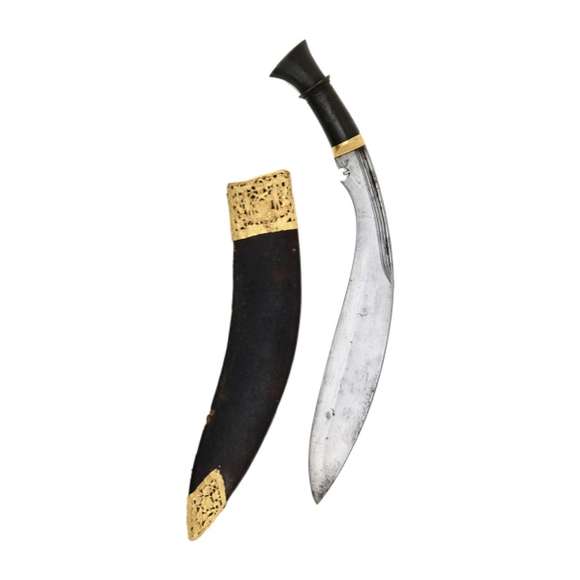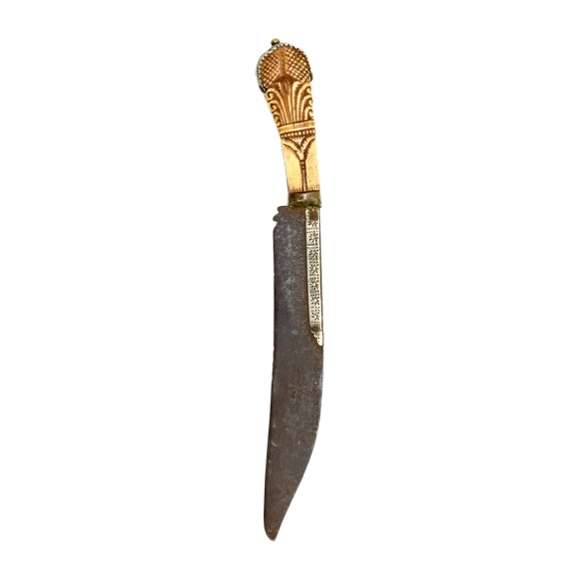Language: Ainu
Source: John Batchelor; An Ainu-English-Japanese dictionary. 1905.
Description
Makiri-saya is the Ainu word for the scabbard of a utility knife called makiri.1 It is undoubtedly a loan word from the Japanese saya (鞘).
They are typically carved from the same type of wood as the hilt. Some are made as a single piece, with no seem. Others are a two part construction. Both are often reinforced with cherry bark wrappings that prevent them from splitting.
The decorations usually consist of shallow carvings in the shape of fish scales or other stylized motifs.
A peculiar feature of Ainu scabbards is that they tend to have either a slit at the bottom side, or otherwise a hole at the end of the scabbard. I believe the slit serves a dual function of making it easier to hollow out the channel for the blade on one side and keeping the scabbard interior clean on the other. The hole at the end would probably only serve the latter function.

An Ainu scabbard made out of a single piece,
showing the characteristic slit these tend to have.

An Ainu scabbard made out of two halves,
showing the characteristic opening at the bottom these tend to have.
Notes
1. John Batchelor; An Ainu-English-Japanese dictionary (including a grammar of the Ainu language). Tokyo Methodist Publishing House, 1905.
Examples
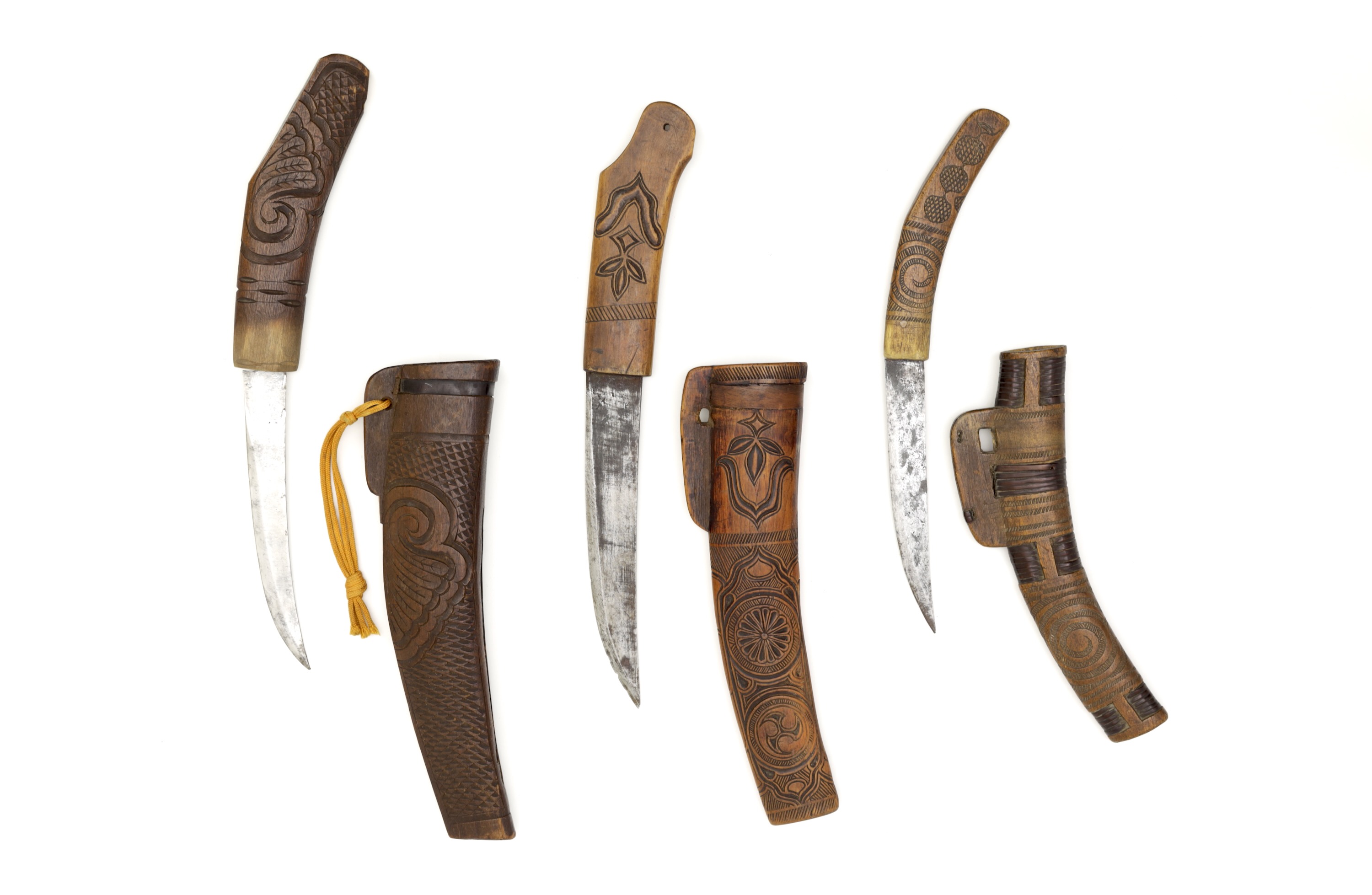
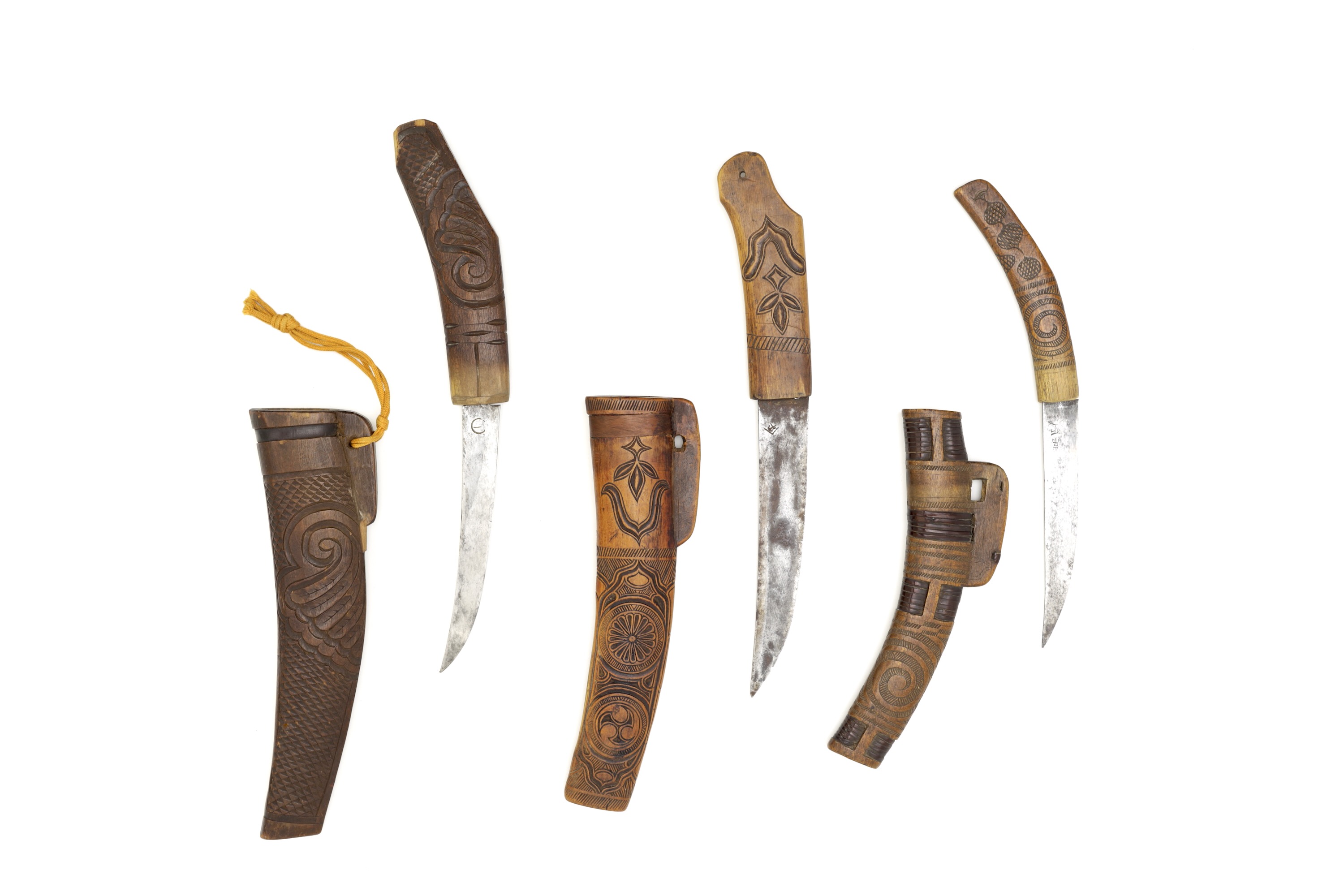
Three makiri.
Sold by Mandarin Mansion in 2022.
On Ainu wood carving
Here follows an interesting excerpt from Arnold Henry Savage Landor, who lived among the Ainu in 1893:
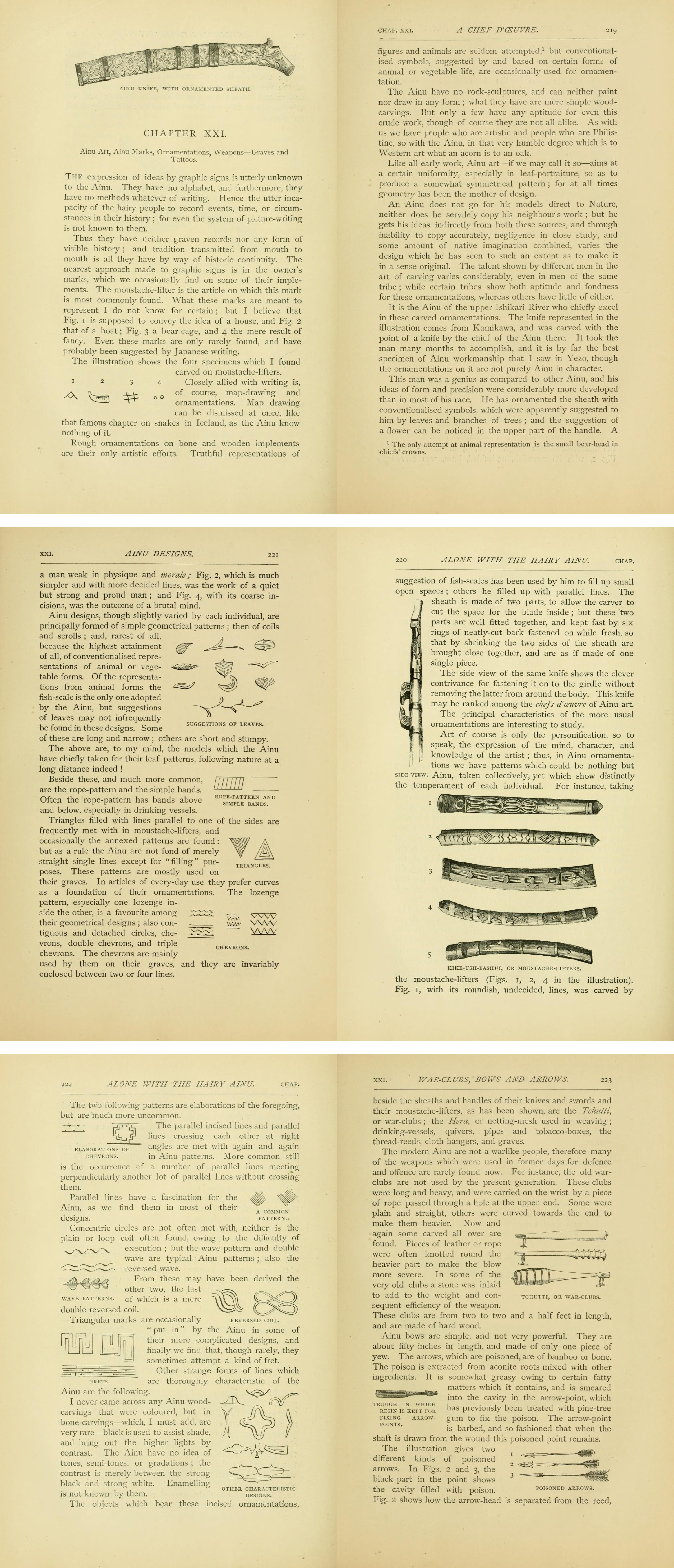
Arnold Henry Savage Landor;
Alone with the hairy Ainu: or, 3800 miles on a pack saddle in Yezo and a cruise to the Kurile islands.
London, John Murray. 1893. Pages 218-223.

Arnold Henry Savage Landor, 1865-1924.
Glossary of terms
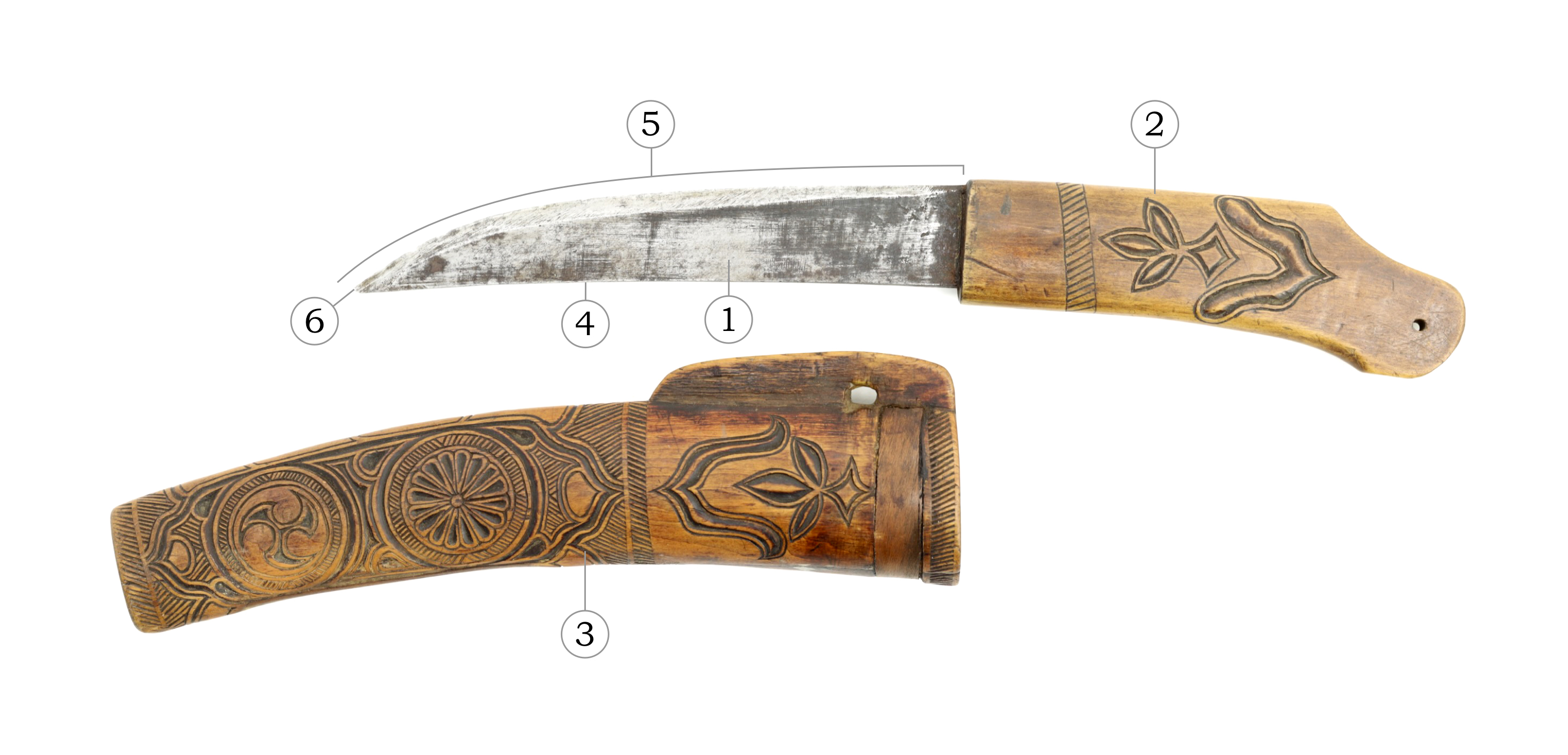
|
# |
English |
Ainu |
|
| 1 | Knife blade | makiri-ibe / ibehe | |
| 2 | Knife handle | makiri-nip | |
| 3 | Knife sheath | makiri-saya | |
| 4 | Back of knife | mekkashike | |
| 5 | Edge | notak | |
| 6 | Point of knife | kanetuhu / etuhu | |
Further reading
Main glossary article: Makiri
Article: Knives and swords of the Ainu

